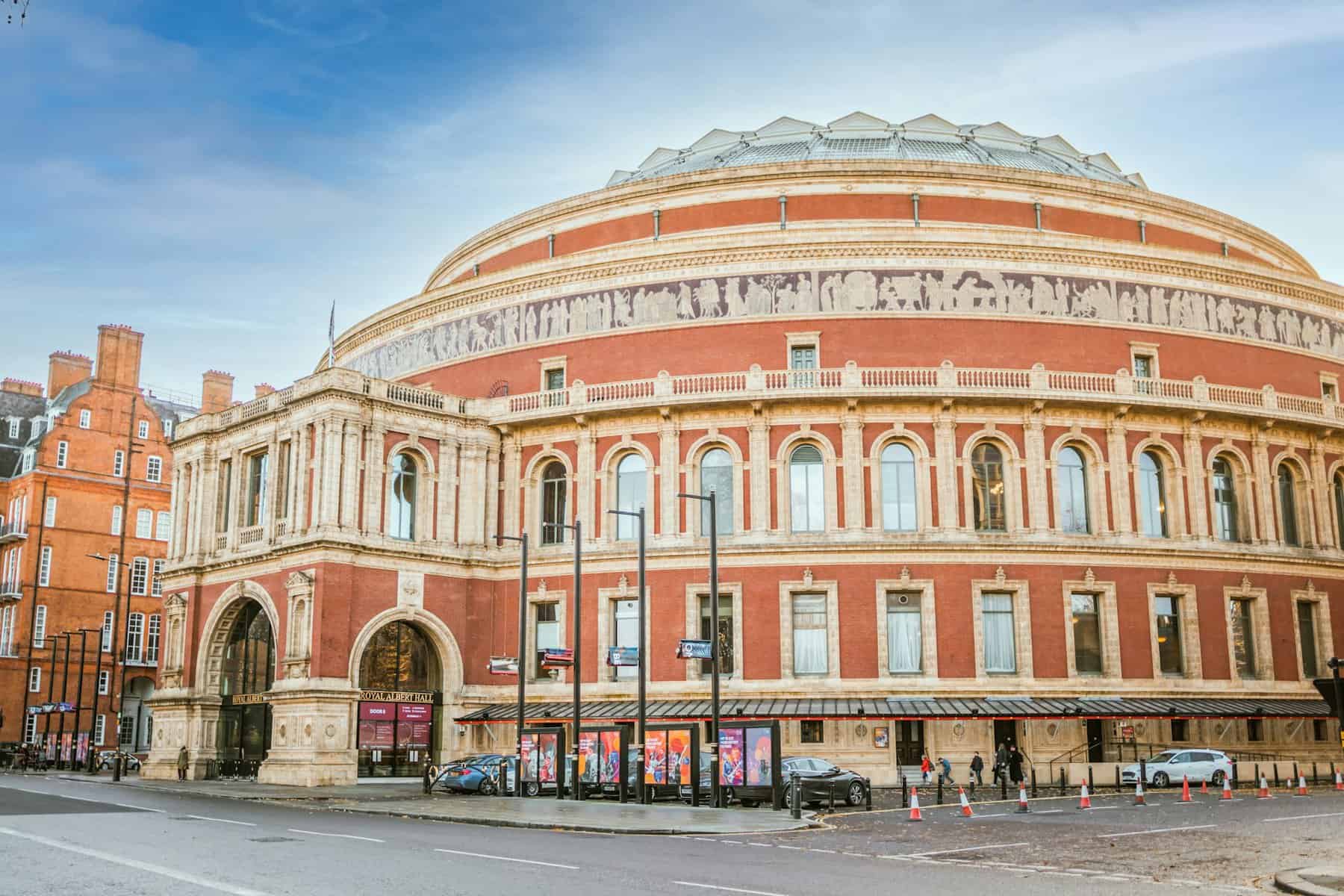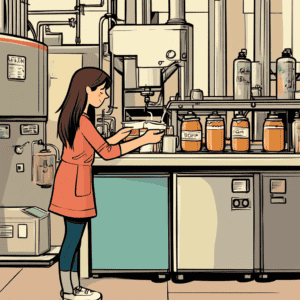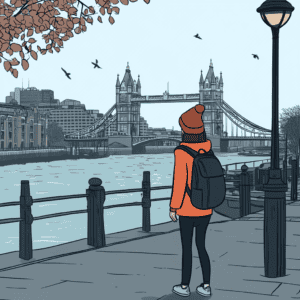STEMming Out: What is Imperial College London Like?

- Originally published
Table of Contents
There are plenty of prestigious universities in London. And Imperial Students themselves will tell you they spend a lot of time duking it out to convince their friends back home they’re better than King’s and UCL.
They might be…if you’re the right kind of student. But what is Imperial College London like?
Imperial College London is a university where you might spend 3 years nerding out on college bowl, building a bionic medical robot, starting your Y Combinator startup around advanced fluid dynamics, and casually watching red carpet celebs stroll to their premieres at Royal Albert Hall. Oh yeah, while spending too much on South Kensington cafés.
Imperial College London Facts and Stats
Degrees: MEng, BSc, MSci, BEng, MBBS/PhD, MBBS/BSc, MBBS
Majors: Science and medicine rule, with majors from engineering, the hard sciences like chemistry, physics, and biology, and medicine. You’ll find top #20 global programs in cardiac systems, clinical medicine, endocrinology, ecology, gastroenterology, immunology, infectious diseases, mathematics, microbiology, public health, radiology, and surgery.
Location: London City Center, London
Cost for international students: Fees differ by program. Consider a few to get an idea of the average: it’ll set you back £41,650 for biochemistry with management, £40,940 for materials science and engineering, and £53,700 for clinical medicine.
On-campus housing cost: £132 to £339 weekly (£5,148 to £13,221 for a 39-week lease). All incoming students are guaranteed housing for their first year.
FAFSA Funds: Yes
Abroad from abroad: Yes, except for materials, design, business, and medicine. Spend a year abroad in Europe, North America, Australia, or Asia. Your options vary based on program.
Student body: ~11,300 undergraduates. About 3,800 (or 34%) are internationals.
Five adjectives: Global, hardworking, STEMmy, geeky, quiet
Life at Imperial in Central London
If you’ve strolled past the magnificent Royal Albert Hall (where you’ll graduate from Imperial), you might guess that this stretch of central London is called “Albertopolis.” It’s home to Albert’s pet projects, from Imperial College London itself to a host of other cultural institutions that make it a cool and culturally rich neighborhood for students, chock full of free-to-enter museums.
There’s the famous Natural History Museum, with its iconic blue whale skeleton. In winter, you can pay admission to visit the outdoor ice rink on the grounds where you can wow your friends with your rusty waltz jump. There’s also the Victoria and Albert (V&A) Museum nearby, where you can find everything from Constable’s classic oil paintings of landscapes to a 3D-printed gun.
Or head over to the science museum. It’s particularly popular with the many left-brained students at Imperial, with its 19th-century analytical engine, giant mill-spinning cogs, and early satellite rockets.
Food, Entertainment, and Prices for Students in South Kensington
Enjoy the museums as much as you can. Living in London can expensive, and while public museums in the UK are free, everything else in this upscale neighborhood will take a bite out of your student budget. You’ll find unlimited ways to blow your cash in this posh little corner of Kensington and Chelsea, but let’s focus on some affordable entertainment nearby.
Luckily, you won’t have to stray far to find a beloved weekly farmer’s market. You can stock up on fruit and veg (and fresh breads) to get you through the week eating healthy, but mainly, you’ll find a student-friendly collection of booths selling cheap street food that’ll get you through your next 100 pages of reading.
When you’ve eaten your fill and still need a fast-food fix, check out the area around the South Kensington tube stop. It has everything you need, from Five Guys to sandwich rolls, tapas, shawarma, and Snowflake’s truly decadent gelato creations.
When the sun peeks out, students can warm themselves on Queen’s Lawn, on campus, or venture a few blocks north to Hyde Park, where they can get in a run, and then catch a concert at the Royal Albert Hall.
Overall, the neighborhood of Kensington and Chelsea is affluent, safe, and village-like. Translation: students lament the nightlife and you won’t find the artistic grit long associated with student-centered neighborhoods here. Street graffiti is thin on the ground. Character, youth culture, and class-inclusion are also sore spots for students looking for a more stereotypical student atmosphere. If you’re feeling like you need some tattoo parlors, pierced neighbors, and £5 t-shirts, hop the tube over to Camden to get your fix.
The neighborhood is sleepy, but ironically, I see that as a good thing…I don’t feel like I am in the middle of a huge city. It feels manageable and small-scale when you’re getting used to everything being so new.
For those who want some swank nightlife without venturing too far, there are clubs in Kensington and Chelsea, but students aren’t too enthusiastic about them. First, hitting up B London or Dolce can be a big splurge. Those who want to experience London more often make their way to more distant student nights at places like Fabric (where you can also see some fabulous shows and people-watch from the balcony), Heaven, or Tiger Tiger. All have student nights, and the burden of traveling within London is alleviated by an extensive, safe, and cheap subway system. Besides, you’ll meet students from all walks of life who study at multiple London universities.
At Imperial, you’ll also face this reality: going out isn’t required at all. In fact, it’s more common to find students hanging around the student union club, or exploring this corner of London and all the culture it offers.
You can get food from every culture here. You can meet people from all over the world. I feel like I didn’t go to uni in London; I feel like I came to uni that’s at the crossroads of the world.
If clubs aren’t your thing, you’ll find some underrated student-friendly activities to do too: the science museum is not only the place to nerd out on academic pursuits. You can also hone your Mario Kart Skills in a special exhibit room called Power Up, where you can play 15 of your closest friends (or total strangers) in the Halo ring, and spend the day exploring 50 years of video game history (an annual pass can cost less than a night at the pub, at £18).
Undergrad students (and those under 25) can take a date to a seemingly endless list of film festival flicks at Ciné Lumière where you can bask in the art deco atmosphere and indulge your love of subtitles. It’s another great date spot.
Safety for Imperial Students in South Kensington
Kensington and Chelsea has been called “Britain’s Monaco,” where almost a quarter of residents work in finance, yet it’s the least safe borough in London. Crime here is 60% higher than the UK rate and the most common crimes aren’t even property crimes — they’re violence and sexual assault. Thefts that aren’t burglary and bicycle theft are almost double the rest of London, so be sure to lock up both your flat and your ride. The area around Imperial College is even a hotspot for crime within the borough.
Why? One theory says that affluence may be part of the problem since more industrial areas are more likely to offer employment options to working-class residents. Ultimately, those employed people can afford to go out, get drunk, and cause a little trouble. Those pinching pennies in Kensington and Chelsea stay home watching Dr. Who instead.
What do students think? They’re unfazed, and the majority we spoke to considered the area very safe. Imperial is also there to make students feel a little better. For one, there’s a “SafeZone” check-in app so that students can rest assured their location is monitored when they’re in a risky situation to connect to campus resources on the go. That’s great for large-scale events.
You can pick up a personal alarm on campus. It’s security I consider but I have never used it. It does feel that the university cares. They also try to make sure you can go between campuses safely all over London.
At Imperial, men outnumber women 65% to 35%, so concern about safety issues may also be skewed. Nevertheless, one female student echoed her male counterparts’ sentiments about South Kensington feeling perfectly safe.
I have been here almost 2 years, and haven’t ever felt uneasy walking through the area. It’s well-lit. It’s very much locals walking their dogs or shopping. It can be busy at all hours, which also makes it feel safe.
South Kensington might be the crossroads of the world, but it’s a tucked-away enclave that’s hardly the crossroads of London. Nevertheless, some students think that’s what makes it a great base for student life. With all the access and all the museums, Imperial students can come home to this quiet(ish) corner of the capital every evening and hit the books.
Campus Vibes at Imperial
The Imperial campus in South Kensington is a modern and integrated behemoth comprised of a mix of white stone, red brick, and postmodern glass edifices and edged with white row houses, many of which house international embassies. For example, the Royal School of Mines (which houses various engineering, biotechnology, and earth sciences departments), feels like stepping into the halls of government to study in rooms full of concrete block, tile, and sky-high columns.
This “grand Victorian” style was meant to showcase 19th-century Britain as an imperial, industrial power. Institutions of learning, in particular, were painted with this aristocratic brush. But as Imperial matured, it began incorporating newer ways of conveying scientific prowess into its campus footprint.
South Kensington is a place you’re only going to experience once. And there’s so much to do in the area and on campus, with societies, and your social life, at the union, and spending time with friends. I wanted to be based in South Kensington because of that.
That’s why Imperial also boasts some uninspired 1960s-style university shoeboxes that would be at home on any state school campus in the US (we’re looking at you, Central Library, but you’re far from the only offender).
As the campus grew, it also took on so many students that crowding can be an issue today. At some point, you’ll get bleary-eyed over the rows and rows of sky-blue or chartreuse carrels in the library, unable to find your own spot during exams. Library crowds at Imperial are worse than at many other UK universities: arrive early, stake out your space, succumb to the call of a famous Imperial library muffin, and study with your pals so you’ll be able to take breaks without losing your coveted spot.
Crowding overflows from the library to the small quad, packed with picnicking students on a sunny day, making the urban vibes of this confined campus apparent. After all, there’s not much space for new university facilities in South Kensington.
While many of the post-WWII buildings at Imperial don’t bring the “wow” factor to a campus tour, all are new, maintained facilities that students say are well-designed for study and have modern amenities.
Like the Alexander Fleming Building (named after the professor at a medical school that later merged with Imperial, who invented penicillin). Its interior halls, stairs, and bookshelves feel like a mod game of Donkey Kong, but in all the right ways. Cozy up with an anatomy textbook between med school classes in the social pods, with tables and couches comprising impromptu study areas throughout the cavernous space. Get a small study room or check out the students’ common room. There are two computer labs on-site, too. Air-conditioned lecture halls get rave reviews. Overall, medical students seem happiest with their facilities.
The most iconic campus landmark is the monumental Queen’s Tower (which you won’t be able to climb, sorry). Built for Queen Victoria’s 50th anniversary on the throne, it’s visible around London, so you’ll always be able to find your way back to Imperial.
The tower almost got the axe in the ‘60s to make way for new campus facilities when Imperial’s leadership proposed a campus and a mission dedicated to the “white heat of the technological revolution” but ultimately, historical conservationists won the fight, and you’ll have to find your labs elsewhere today.
Imperial continues to build the future with partnerships that support all kinds of labs you won’t find elsewhere: there are state-of-the-art facilities like Imperial’s cognitive robotics, computer vision, Dyson’s robotics lab, and quantum computing facilities.
While undergrads won’t spend tons of time innovating in these vaunted spaces, those coming into an undergraduate degree already knowing they want to continue their studies in science, business, and research fields can get a foot in the door on this London campus. In the process, they’ll also take home bragging rights that they’re at one of the top STEM schools on earth.
Undergrads programs are mostly concentrated on the South Kensington campus. But Imperial has grown far beyond this enclave and now has 9 other London campuses, plus research centers. Ecology students may find some research opportunities at the rural Silwood campus. Medical students might use medical facilities at Fleming’s St. Mary’s campus or Charring Cross, but there are other medical facilities in Hammersmith and Royal Brompton, too.
Living on Campus in South Kensington…and Beyond
For accommodation, you’ll find 6 main housing facilities, and while freshmen are guaranteed housing, applications aren’t processed until all offers are made in the summer, which makes for last-minute planning. While you won’t know what you’re getting for a while, you’ll have some choice in what you ask for: Imperial does a good job of offering variety in room types and price points (though all are “self-catered,” meaning you’ll get your meals on your own, using communal housing kitchen facilities, or eating out).
Rooms range from roughly £181 weekly (for a total of roughly £7,000 or just over $9,000). In expensive London, these rooms are fairly cheap and certainly hard to get! For instance, at gorgeous Beit Hall, the least expensive of the South Kensington dorms, there are 8 twin bed spaces (4 total rooms) with a shared bath at the lowest price point, while there are 156 single, en suite rooms at the highest price point (£285 weekly, or about £11,000 or $14,000 annually). You’ll also find the campus club in Beit Hall, which is right next to campus. Both of these perks make the “loud” Beit Hall an appealing option.
I loved living in Beit Hall first year. I was lucky to be on the east side so I got to see some celebs walk the red carpet at premieres at Royal Albert Hall. It’s also a large hall with the union inside. So you don’t even have to go outside to be right at the center of Imperial life.
Private housing runs around that high point, so while you won’t get left in the cold, as is the case in other UK universities with limited student housing, you may get priced out fairly easily.
Eastside and Southside Halls are adjacent to campus and the gym, making them popular. They’re known as “international” because they’re pricey, which is a clue that Imperial students haven’t quite embraced their ubiquitous international student body 100%.
Wilson House is across Hyde Park, so students often take the tube to class, or walk through the park. Xenia, in Waterloo, is also farther afield from classes, though it’s stellar central London location tempts students who want to experience the postcard version of life in the shadow of the London Eye and Big Ben. Imperial’s newest dorms (also its least expensive) are clustered out in North Action, near the Hammersmith campus and the hospital’s med school facilities. Students here aren’t necessarily medical students.
Remember that a monthly transportation card can erase the cost savings of living farther afield (and entice you to lunch in cafés rather than dashing back to your campus-adjacent dorm kitchen for homemade meals). So costs aren’t always what they appear. You’ll also save on housing by getting as far away as possible. That said, London’s private housing market will still bite you in years 2 and 3.
What is Imperial College London Like for Studying?
Telling fact: Imperial College London’s student newspaper, the Felix, has an “Investment” section but no “Entertainment” section. Read into that what you will. We sure did. In fact, we had to seek out current students to find out where they were hanging out after class because online chatter about student hangouts was virtually non-existent. Maybe there’s some truth to the stereotype that students at Imperial are known as workhorses: they study like maniacs, but they may not play hard.
Luckily, reports about Imperial’s notorious hustle are overhyped. Students here say they have a decent work-life balance, and one of their biggest challenges is convincing outsiders that they do have social lives. The difference? Imperial students are overwhelmingly committed to performing well; they don’t feel shamed for spending weekends at the library. Want to spend the weekend devoted to robotics? Imperial is for you. In spite of that ray of hope, students at Imperial score poorly on student satisfaction.
Why? Several factors may be to blame. First, London universities score worse than their campus-based peers. There’s just something lonely and intimidating about making your way in the big city, and there’s something stressful about paying for it. Further, students note that they don’t find university mental health support tops.
Mental health resources are just ok. There are resources, but they’re not always the easiest to access. There’s a lot of imposter syndrome here and people work really hard to stay afloat.
Admissions, Competition, and Workload at Imperial
Imperial offers spaces to about 30% of total applicants, which feels high given its competitive ranking and interview process. Ultimately, about 12% of applicants enroll.
Students start their Imperial journey with an interview that focuses on a student’s personal statement and their knowledge of the field, à la Oxford or Cambridge. These can feel like interrogations about the subject matter, complete with problem sets with correct answers — in other words, it’s a process that’s more like an oral exam than what Americans would call an interview.
The UK higher education system, in general, can feel more centered on testing and memorization than the US model. US students are either incredibly grateful for this “right/wrong” system or horrified by it — there seems to be little in between. But if your heart flutters when you watch British university quiz shows, the UK (and Imperial) system may be right up your alley.
Once students slay that first exam, they go on to a typically British academic cadence: lectures, some weeks full of afternoon labs, evening library time, and exams. Tons of exams. In fact, most grades are based on single grades, so students should be prepared for their first submission to any given professor to comprise a large percentage of their grades. On top of that, a lot of self-study time goes into the academic routine at Imperial. That could be a part of the college’s low satisfaction scores, as students are left to their own devices to work out, “What is wanted of me?”
I have always been good at being responsible about studying, and I enjoy the teaching style. I’m trusted to handle my own workload and schedule. It’s your own fault if you don’t handle it well.
Academically, Imperial runs degree programs differently depending on your field. Sometimes, your first year will count toward your “degree designation”: the “summa cum laude”-styling you’ll be awarded at graduation.
Undergraduate students are sometimes graded on a curve, with quotas for certain grades in your classrooms. That system gets poor reviews from students we spoke to, who said their programs weren’t as close or supportive as they desired because of the internal competition. Despite that tension, other students said that the close-knit nature of a totally left-brained university outweighed any student-on-student rivalry.
Having so many science students around is a huge plus, especially compared to Oxford or Cambridge. Everyone is in the same boat in that way and can support one another.
Imperial degrees may be heavily science-based, but first-year students get a broad taste of multiple scientific topics and then dig into highly specific fields. With such an international student body, that can mean year one is all about information overload, as professors work to get students up to speed and face course content on the same footing.
While that can feel like drinking from a fire hose, students say their next years are actually easier, as they ease into their field of expertise and gain confidence. For many, coming to Imperial College was intimidating from day one. They anticipated the material would be incredibly hard, that they wouldn’t understand it, and that they’d likely fail out as soon as professors realized they had no idea what their studies were about. It takes a couple of exam seasons for students to recognize they belong just fine.
The lecturers and tutorials I have had have been brilliant. All-around brilliant.
Societies, Fun Programs, and Student Career Services
Need a break from academics? Try one of Imperial’s clubs and societies. There’s no American club, but there’s American football, gospel choir, golf, and poetry, if you’re missing those Friday night lights. From private equity to ultimate frisbee, you may find something outside academics that extends your support group past your program and widens your circle of friends.
Imperial is built for city-dwellers: outdoor sports fields are anomalous here. While there are Imperial-run gyms near student housing that are dirt cheap (around £40 per year), and plenty of sport clubs, students who need the comfort of a team aren’t going to be happy here.
For budding startup founders, Imperial boasts a mentorship program for entrepreneurs complete with prototyping equipment that can help you get your venture underway. There are networking supports and funding competitions, too.
Career services mirrors some of that support, with networking events of its own, and shadowing alongside job-search workshops that can help veer students into meaningful experiences after graduation.
Overall, Imperial caters to students with a competitive streak. They like working hard because they’re into STEM subjects. They thrive in a competitive environment, and they’re excited to meet new friends and future workmates in an environment that will set them up to innovate in their fields for decades to come.
Applying
Apply by registering with the UK’s online portal, UCAS, and choose up to 5 programs (4 if you’re applying for medical, veterinary, or dentistry programs). Submit transcripts, a personal statement, a letter of recommendation, and applicable test scores. Later, you may be invited for an interview. Tests are international, subject-matter-based tests that require traveling to a testing center to sit for a timed, proctored test. They’re applicable in certain programs, like business and chemistry. For medicine, have your materials in by October 15 for the following fall. For other courses, you’ll have until January 29.
Typical entry requirements are high. For those looking into programs like biochemistry, you’ll need 3 scores of 5, including one chemistry, one in either calculus, biology, or physics, and another test in a non-humanities subject. Students in IB schools: you’ll need a 38 minimum, with scores of 6 in chemistry and either biology, mathematics, or physics.
Is Imperial the Start of Your STEM Empire?
If your left brain is set on taking over the world, Imperial is a great place for you to land. Some of its biggest student accolades are the quality of professors and lectures, the networking benefits, and the prestige of a degree that’s in the top 5 worldwide. That its next door to a giant park in central London doesn’t hurt either.
But if Imperial isn’t your bag, try old academic standards: Oxford or Cambridge. Even University College London offers a stellar degree in this worldly city and in a country with tons of high-achieving universities. And if you’ve just started on your quest for a UK degree, learn the ins and outs of going to college in England.
Related Posts

Jessica Share
Jessica is the writer, Ph.D., and mom-of-an-abroad-student-in-the-UK at the helm of College Abroad Guides. When she's not asking college students where the coolest place to hang out in their city is, she's figuring out how she can make $60 imported Greek oregano potato chips and £50 British bacon potato chips appear on her doorstep for the cost of a local bag of Lay's.





